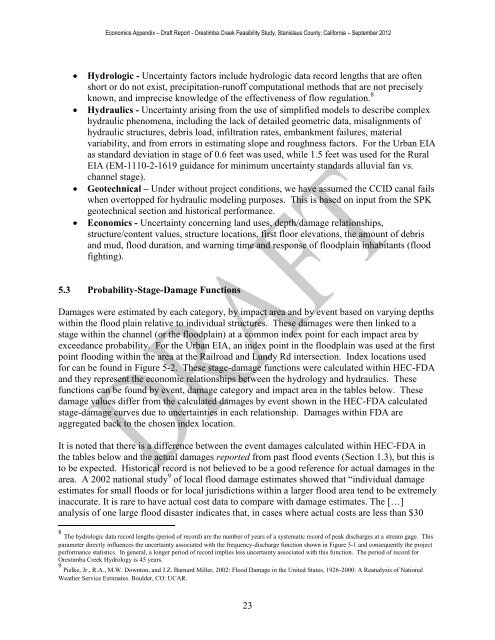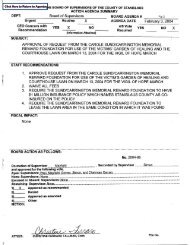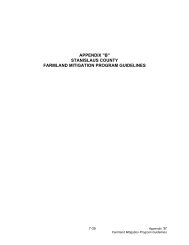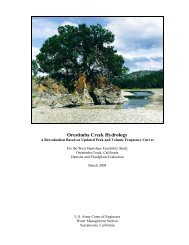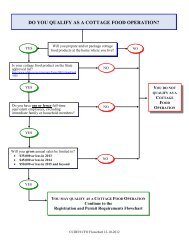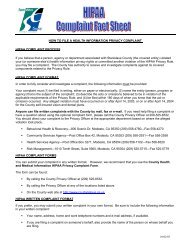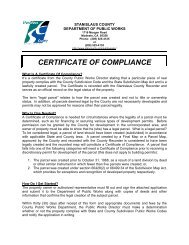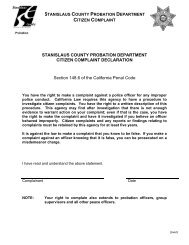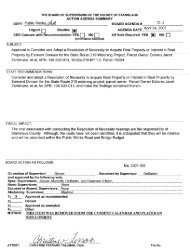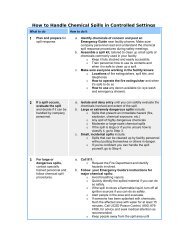Orestimba Creek Feasibility Study - Stanislaus County
Orestimba Creek Feasibility Study - Stanislaus County
Orestimba Creek Feasibility Study - Stanislaus County
Create successful ePaper yourself
Turn your PDF publications into a flip-book with our unique Google optimized e-Paper software.
Economics Appendix – Draft Report - <strong>Orestimba</strong> <strong>Creek</strong> <strong>Feasibility</strong> <strong>Study</strong>, <strong>Stanislaus</strong> <strong>County</strong>, California – September 2012<br />
<br />
<br />
<br />
<br />
Hydrologic - Uncertainty factors include hydrologic data record lengths that are often<br />
short or do not exist, precipitation-runoff computational methods that are not precisely<br />
known, and imprecise knowledge of the effectiveness of flow regulation. 8<br />
Hydraulics - Uncertainty arising from the use of simplified models to describe complex<br />
hydraulic phenomena, including the lack of detailed geometric data, misalignments of<br />
hydraulic structures, debris load, infiltration rates, embankment failures, material<br />
variability, and from errors in estimating slope and roughness factors. For the Urban EIA<br />
as standard deviation in stage of 0.6 feet was used, while 1.5 feet was used for the Rural<br />
EIA (EM-1110-2-1619 guidance for minimum uncertainty standards alluvial fan vs.<br />
channel stage).<br />
Geotechnical – Under without project conditions, we have assumed the CCID canal fails<br />
when overtopped for hydraulic modeling purposes. This is based on input from the SPK<br />
geotechnical section and historical performance.<br />
Economics - Uncertainty concerning land uses, depth/damage relationships,<br />
structure/content values, structure locations, first floor elevations, the amount of debris<br />
and mud, flood duration, and warning time and response of floodplain inhabitants (flood<br />
fighting).<br />
5.3 Probability-Stage-Damage Functions<br />
Damages were estimated by each category, by impact area and by event based on varying depths<br />
within the flood plain relative to individual structures. These damages were then linked to a<br />
stage within the channel (or the floodplain) at a common index point for each impact area by<br />
exceedance probability. For the Urban EIA, an index point in the floodplain was used at the first<br />
point flooding within the area at the Railroad and Lundy Rd intersection. Index locations used<br />
for can be found in Figure 5-2. These stage-damage functions were calculated within HEC-FDA<br />
and they represent the economic relationships between the hydrology and hydraulics. These<br />
functions can be found by event, damage category and impact area in the tables below. These<br />
damage values differ from the calculated damages by event shown in the HEC-FDA calculated<br />
stage-damage curves due to uncertainties in each relationship. Damages within FDA are<br />
aggregated back to the chosen index location.<br />
It is noted that there is a difference between the event damages calculated within HEC-FDA in<br />
the tables below and the actual damages reported from past flood events (Section 1.3), but this is<br />
to be expected. Historical record is not believed to be a good reference for actual damages in the<br />
area. A 2002 national study 9 of local flood damage estimates showed that “individual damage<br />
estimates for small floods or for local jurisdictions within a larger flood area tend to be extremely<br />
inaccurate. It is rare to have actual cost data to compare with damage estimates. The […]<br />
analysis of one large flood disaster indicates that, in cases where actual costs are less than $30<br />
8 The hydrologic data record lengths (period of record) are the number of years of a systematic record of peak discharges at a stream gage. This<br />
parameter directly influences the uncertainty associated with the frequency-discharge function shown in Figure 5-1 and consequently the project<br />
performance statistics. In general, a longer period of record implies less uncertainty associated with this function. The period of record for<br />
<strong>Orestimba</strong> <strong>Creek</strong> Hydrology is 45 years.<br />
9 Pielke, Jr., R.A., M.W. Downton, and J.Z. Barnard Miller, 2002: Flood Damage in the United States, 1926-2000: A Reanalysis of National<br />
Weather Service Estimates. Boulder, CO: UCAR.<br />
23


